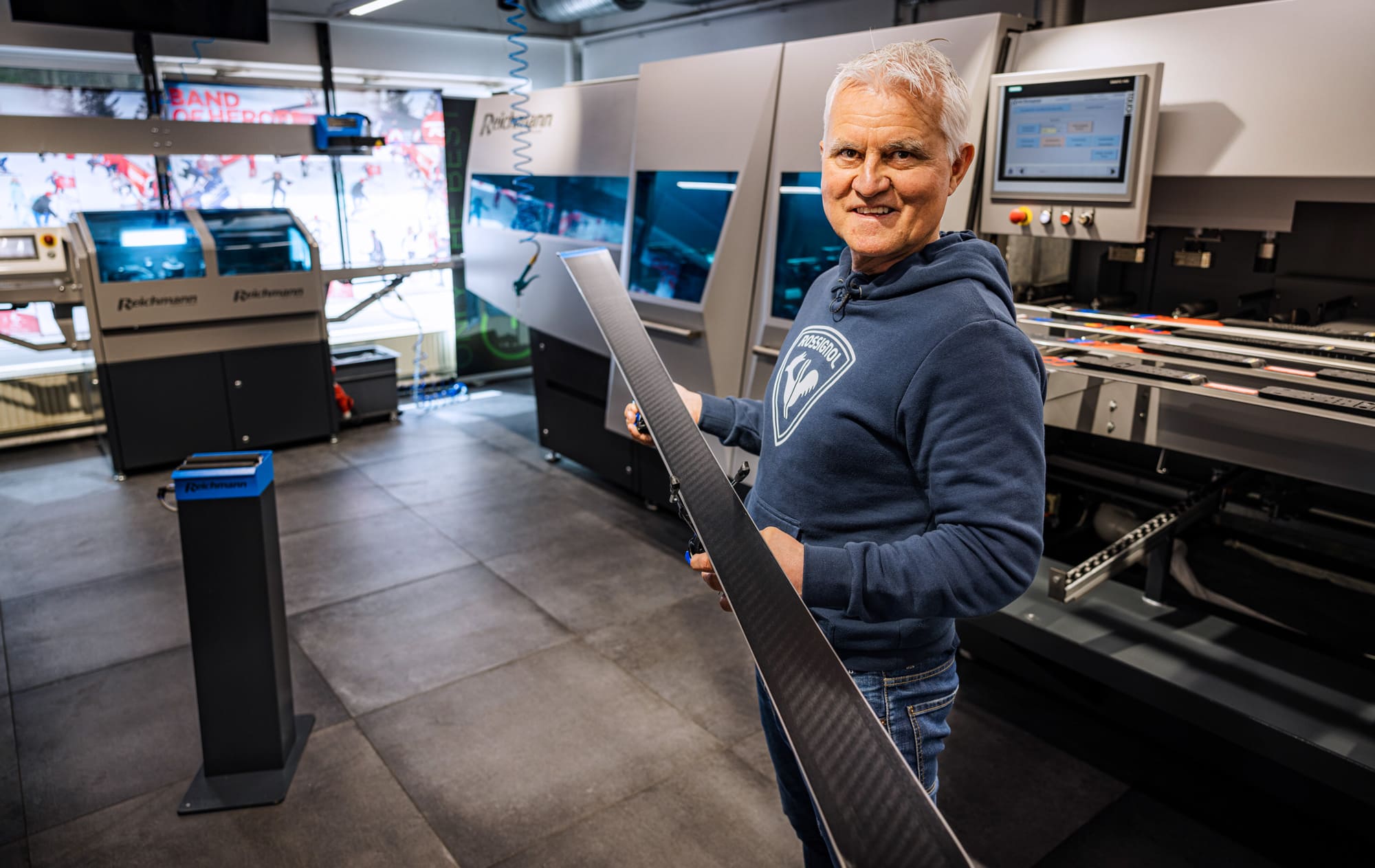| Setting back the sidewall & pre-grinding the side edges | cleaning the base | repairing the base | Flattening the base | Structuring the base | Finishing side and base edges | Waxing and brushing out | |
|---|---|---|---|---|---|---|---|
| PROFI B | X | X | |||||
| PROFI B Prof. | X | X | |||||
| PROFI B VARIO | X | X | X | ||||
| PROFI B VARIO K | X | X | X | X | |||
| PROFI 4 | X | X | X | ||||
| PROFI 4 K | X | X | X | X | X | ||
| PROFI S | X | X | |||||
| LS-1 RACE | X | ||||||
| KSM | X | X | |||||
| KFM-U | X | ||||||
| DTS-U II Race | X | ||||||
| BWM 350 C | X | ||||||
| Waxfuture | X | ||||||
| Race Waxer | X | ||||||
| Glide Master | X | ||||||
| Polymat | X | ||||||
| Handausbesserungsgeräte | X | ||||||
| SF-1 | X | X | X | X | X | X | |
| SF-3 | X | X | X | X | X | ||
| SF-4 | X | X | X | X | X | X | |
| Slope Master | X | X | X | X | |||
| Slope Master SK | X | X | X | X | X |
Prozessschritte
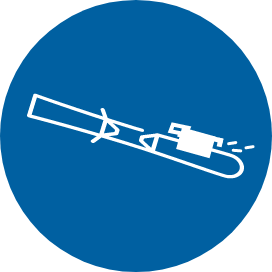
Step 1: Resetting the sidewall and pre-grinding the side edges
With skis that have been ground several times, it can happen that there is no longer sufficient protrusion of the steel edge. In this case, the first step should be to reset the sidewall. Then we start the ski service with the processing of the side edge.
Suitable machines:
- KSM
- Profi 4 K
Manual machining:
Our recommendation for the perfect edge angle:
Angle 88°: ideal edge for standard service
Angle from 87° - 83°: aggressive edge for racing
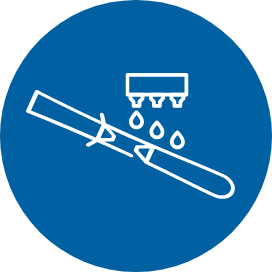
Step 2: Clean and melt the base
The ski or board is roughly pre-ground on a belt grinding machine. This removes coarse dirt and rust. The base is also roughened. This ensures that the subsequent repair material holds better and fine grooves and holes are removed in advance. Damage to the base is then repaired so that the ski can once again glide optimally on the slopes.
Suitable machines for pre-grinding:
Suitable machines for base repair:
- Polymat Pro
- Polymaster
- Manual repair equipment (Kandie, Powerspot etc.) + repair material
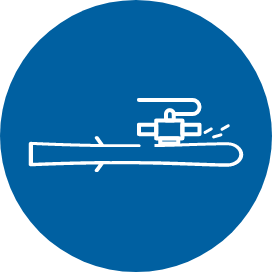
Step 3: Flattening the base
On a stone grinder or alternatively a belt grinder, the ski or board is ground flat and given a fine base structure. This requires several grinding passes. The smoother the base, the more turnable the ski will be after service.
Suitable machines for pre-grinding:
Tips for flattening the base with the stone grinding machine:
We recommend grinding skis with profile surfaces or superstructures with lower pressure, but more often. The last grinding pass should generally be ground with reduced pressure. Use the entire width of the stone. This prevents the stone from running in through the steel edges. For maximum precision, re-sharpen the stone after each pair or after approx. 10 - 15 grinding passes. Reichmann grinders allow more grinding passes until the next dressing, compared to other manufacturers, because the high-pressure water jet keeps the pores in the stone open for a long time.
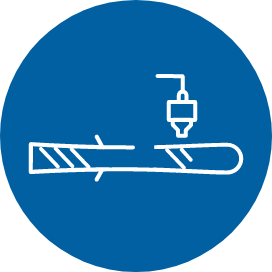
Step 4: Structuring the base
Following the basic grinding, the ski or board is given a structure. Depending on the type of snow, temperature and skiing ability, there are various structure grinds to choose from to achieve optimal gliding and acceleration on the slopes.
Suitable machines for pre-grinding:
STRUCTURE VARIANTS STONE GRINDING
Linear structures:
Very fine straight-line cuts that must always be ground overlaid and are therefore on two levels. The area of application is for very cold and fine-grained snow types.
Crossed structures:
Crossed structures are the most commonly used structures for giant slalom and slalom skis. The cut length of this cross structure depends on the discipline and speed.
- Short cuts have a better base acceleration
- Longer cuts increase the final speed
Profile structures:
Structures that are reproduced in the pavement in a shape similar to car tire treads. The angle of arrow or shaped structures is crucial to swirl the water film under the pavement as fast as possible. These types of structures are only 100% reproducible on NC-controlled stone grinding machines. They should always be ground with the ski firmly centered, otherwise there is a risk that the ski will pull to the right or left as it glides.
LASER TECHNOLOGY
With the new Reichmann LS-1 RACE laser structuring machine, structures can be applied to the ski base for the first time using laser technology. This technology overcomes the limitations of traditional stone grinding. The laser creates high-precision structures with unlimited possibilities. Vary the depth of the cuts, create angles, arcs, lettering or 3D effects - with the laser there are no limits.
Cross-country structures:
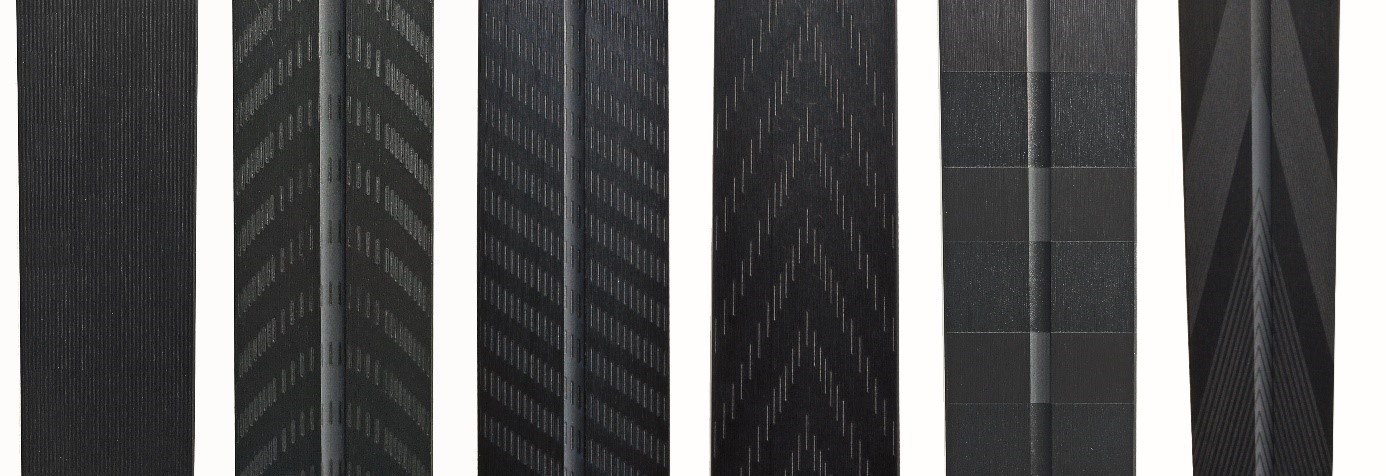
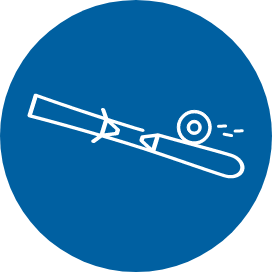
Step 5: Finishing the side and bottom edges
The finer the surface of the edges, the easier the ski is to turn and grip. The goal is a maximally polished
Machines especially for the side edge:
Machines for side and base edge:
- DTS-U Pro
- DTS-U II RACE
- SF-3/SF-4
- Slope Master SK
Machine especially for the base edge:
REICHMANN HQT TECHNOLOGY
- side edge ceramic discs: Plane side edges with highest edge sharpness provide the perfect grip in all snow conditions.
- patented touch discs: Precisely align the discs with the sports equipment, resulting in smooth and early insertion on the side edges
- perimeter polishing unit: You get polished, burr-free bottom edges for more safety and fun on the slopes.
Advantages of HQT technology:
- high time efficiency due to simultaneous machining of both side and base edges
- 0ptimal processing at tip and tail saves time-consuming manual reworking
- burr-free, ready-to-ride skis and boards directly from the machine
- maximum safety and enjoyment on the slopes
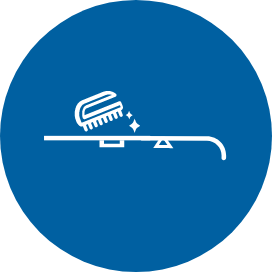
Step 6: Wax and brush out the base
Before hitting the slopes, the ski or board needs a fresh coat of wax. Waxed winter sports equipment not only glides better, it turns easier. From simple rubbing on to time-consuming ironing in - the options for wax application are many and varied.
Suitable machines:
Manual options:
- Application with waxing iron
- GigaGlide Pro
- Holmenkol liquid wax
- Brushes for brushing out wax manually
INFRARED WAX TECHNOLOGY
The infrared light has an optimal depth effect. This means that the wax penetrates deep into the base and therefore lasts much longer. Thus the skiers profit 4 to 5 full ski days from optimum gliding properties on the slopes. The infrared wax meets the highest requirements and is also used in the Ski World Cup.
SKI WAX ALTERNATIVE GIGAGLIDE
Gigaglide is an environmentally friendly alternative to ski wax. The special formula does not only act on the surface, but penetrates into the base, creating a water-repellent effect. GigaGlide thus achieves optimal gliding properties for up to seven days on the slopes, even on ice and wet snow. The effect has already been tested and proven several times by the FS²A Snow, Ski and Alpine Sports Research Center in Innsbruck.

